Labneh, also spelled labnah, labne or lebne, is a versatile Middle Eastern strained yogurt with a spreadable texture similar to cream cheese. This delightfully tangy yogurt cheese is so easy to make, this recipe will become a staple in your kitchen.
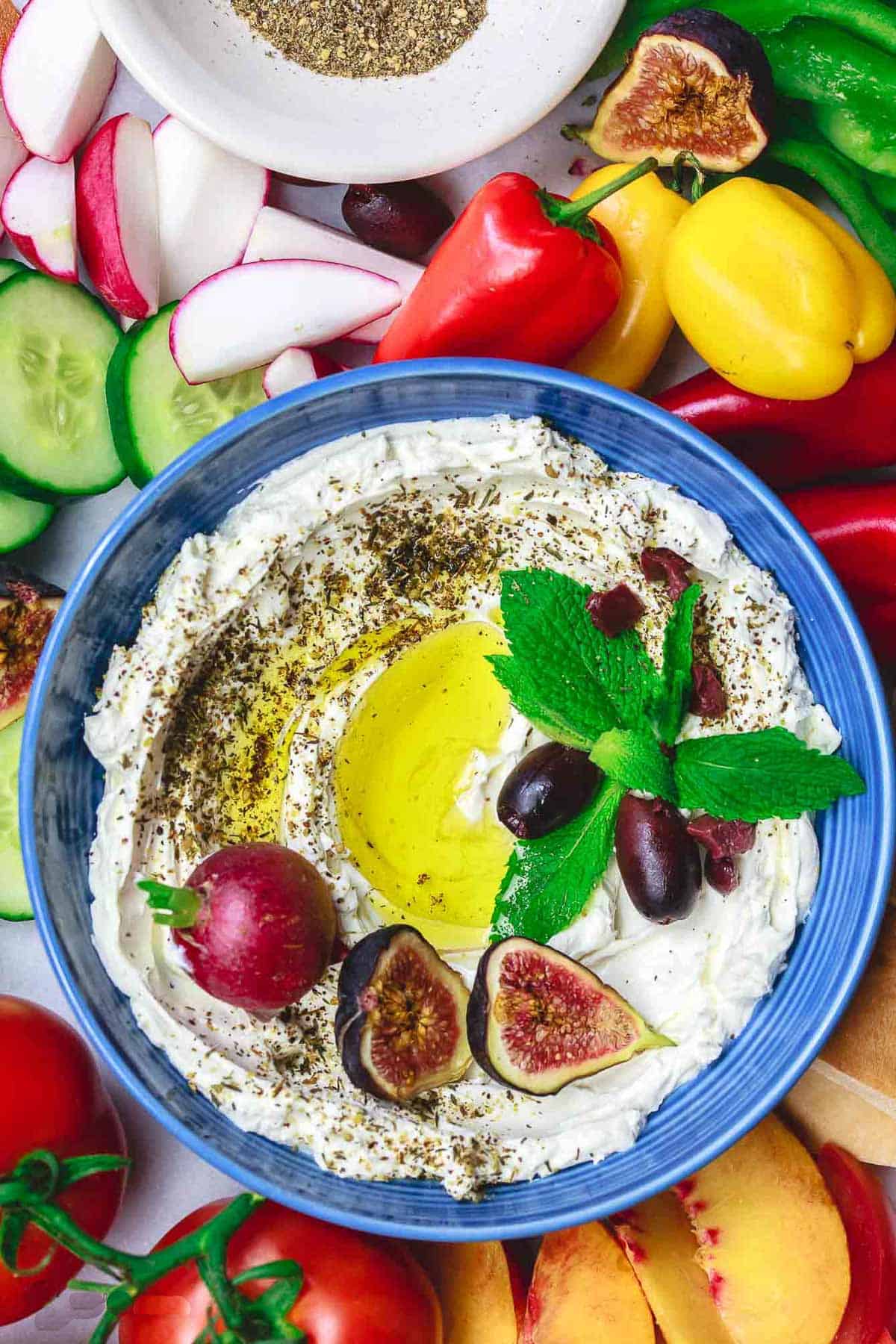
If you love the tangy flavor of sour cream and the versatility of cream cheese, but you’re looking for a healthier option, this labneh recipe is it!
Labneh, a creamy yogurt cheese, is a staple in Middle Eastern cuisine, where its thick consistency makes it perfect for spreading on sandwiches or breads like Turkish Simit, creating a dip for fresh veggies, or using it as a base of any number of recipes like Roasted Beets. This simple recipe requires minimal effort or hands-on time; the hardest part of making it is waiting!
Preparing labneh is a straightforward process that involves straining plain whole-milk yogurt seasoned with a little salt. The straining process removes the whey from the yogurt, creating a thick spread that can be enjoyed plain or dressed up with your favorite herbs and spices. Once you make labneh at home, I’m confident you’ll find many ways to enjoy it!
What is Labneh (Labne)?
Think of labneh as a type of yogurt cheese. You don’t need rennet or any special cheesemaking equipment to make it, just a fine mesh strainer lined with cheesecloth or a tea towel. If you think of Greek yogurt as strained yogurt, labneh is extra-strained yogurt.
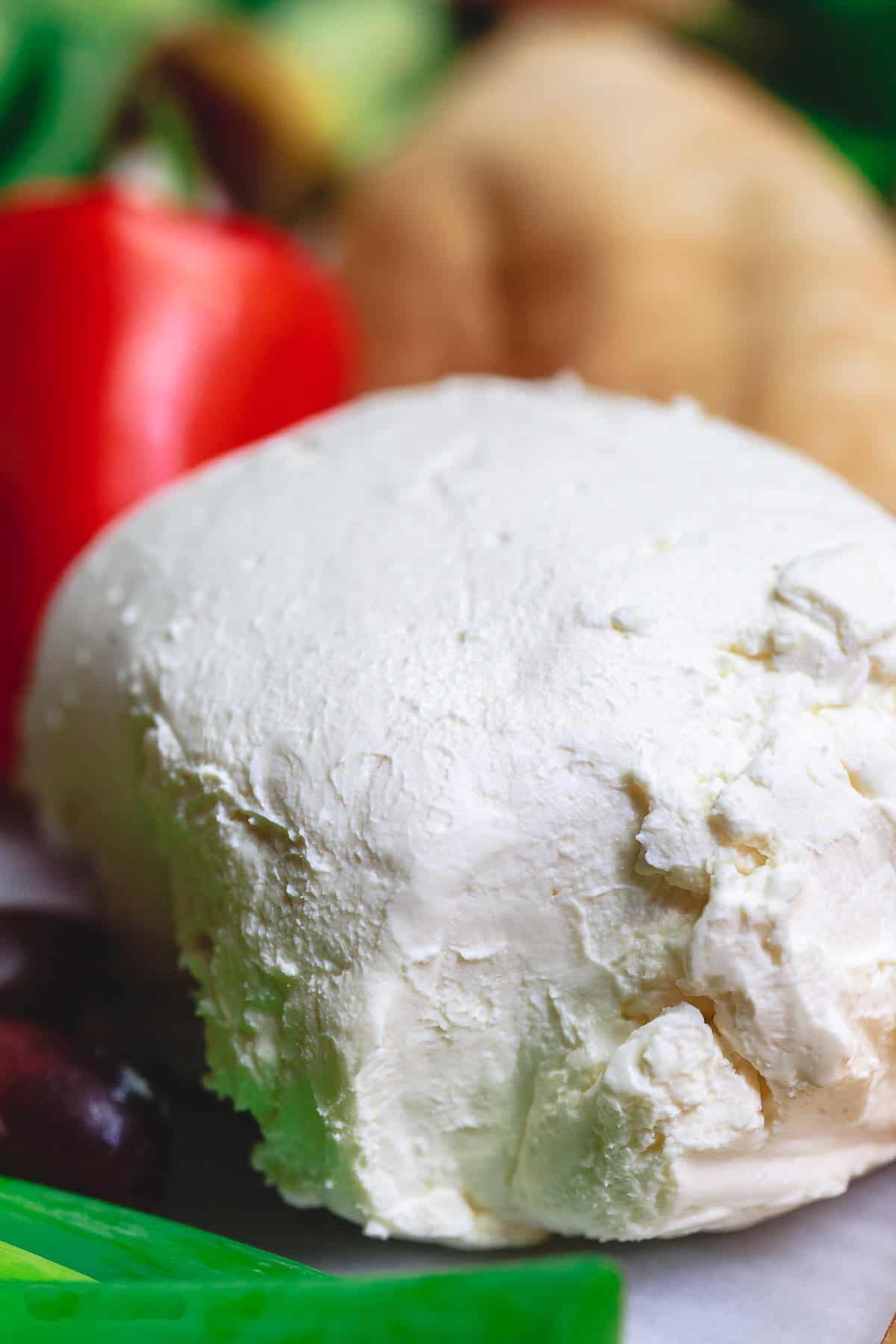
Ingredients for Labneh
Making labneh at home requires just two ingredients:
- Yogurt: I recommend starting with goat milk yogurt or high-quality whole milk yogurt, but you can use any plain yogurt you like to make labneh. Starting with Greek yogurt means that there will be less moisture to drain away and even non-dairy plant-based plain yogurt will work in this recipe.
- Salt: Adding a little salt helps draw the whey out of the yogurt, but it’s largely there for flavoring. The yogurt will still release its liquid without adding the salt. If you’re trying to avoid added salt in your diet you can reduce the quantity or omit it altogether.
How to Make Labneh
Setting up this labneh recipe takes only moments. Most of the time required is hands-off.
- Season the yogurt. Pour 4 cups of yogurt into a large bowl. Stir in 3/4 teaspoon salt.
- Drain the yogurt. Line another large bowl with a linen, flour sack, or muslin towel (or several layers of cheesecloth.) Pour the yogurt mixture into the towel. Pick up the edges of the towel and tie it at the top. Hang from a kitchen sink faucet to drain for 24 to 48 hours. Alternatively, set a large fine mesh sieve, over a deep bowl. Line the sieve with cheesecloth or towel. Add the yogurt mixture. Cover gently with the overhang and set aside on the counter, or in the fridge, to drain for 24-48 hours. If using a towel to make this do not use terrycloth.
- Serve. Spread the labneh in a bowl and top with extra virgin olive oil, za’atar (or chopped fresh herbs like mint or parsley). Add warm Pita and fresh veggies for dipping. Enjoy!
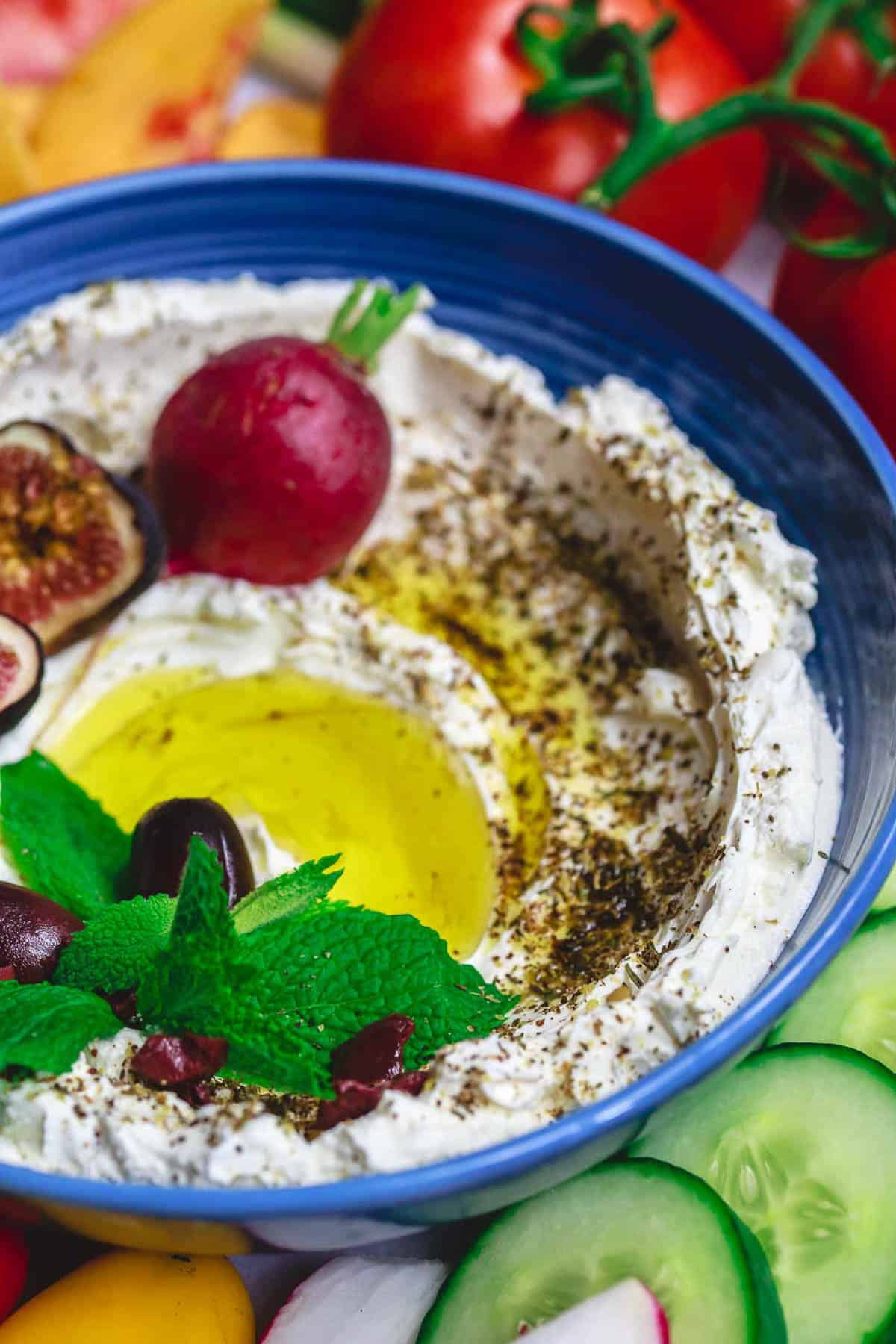
Ways to Mix it Up
Think of this labneh recipe as a blank slate that can easily accommodate nearly any mix-in, either sweet or savory.
- Fold in herbs or spices: Customize the flavor profile of your labneh to suit a specific recipe by mixing in za’atar, oregano, chopped fresh herbs, or lemon zest.
- Make it spicy: Fold in chili flakes or hot sauce to make a smoky, spiced labneh that’s particularly good with grilled chicken or vegetables.
- Add some sweetness: Drizzle with or fold in some honey, fig jam, date syrup, or pomegranate molasses to make a base for roasted fruit or to spread on a slice of toast.
- Swirl in something: Add any savory condiment to transform labneh into a complex dip. Sun-dried tomato pesto or Olive Tapenade are particularly good.
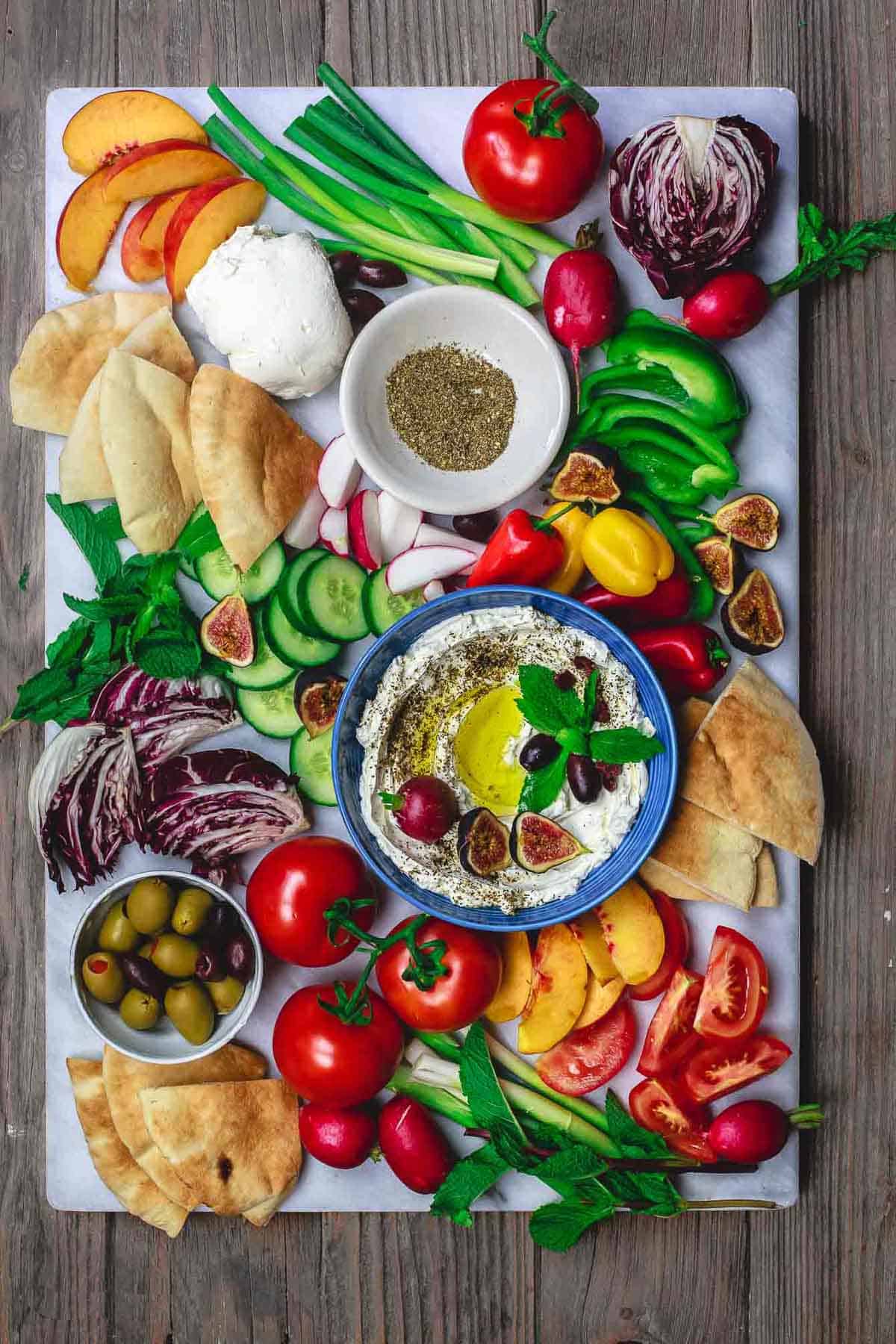
What to Serve with Labneh
Once you’ve made yogurt cheese, consider it a fridge staple and an ingredient that can easily morph depending on the meal. Spread it onto a plate and top it with roasted vegetables for a nearly effortless dinner. Mix in some fresh herbs and minced garlic and you’ve got an easy sauce for Lemon Garlic Chicken or any other grilled chicken recipe. Grate in a cucumber and think of it as a quick version of Tzatziki.
I also like to use it as a stand-in for mayonnaise to lighten up the classic Southern Tomato Sandwich, and it’s creamy enough to replace cream cheese in the fastest (and best) Cucumber Sandwiches.
Because of its lush texture and tangy flavor, it’s also lovely with the sweet flavors of fruit and honey. I love to use it to make a Mediterranean version of Strawberry Shortcake. A dollop of labneh would be a delicious stand-in for whipped cream with any fruit tart or cake.
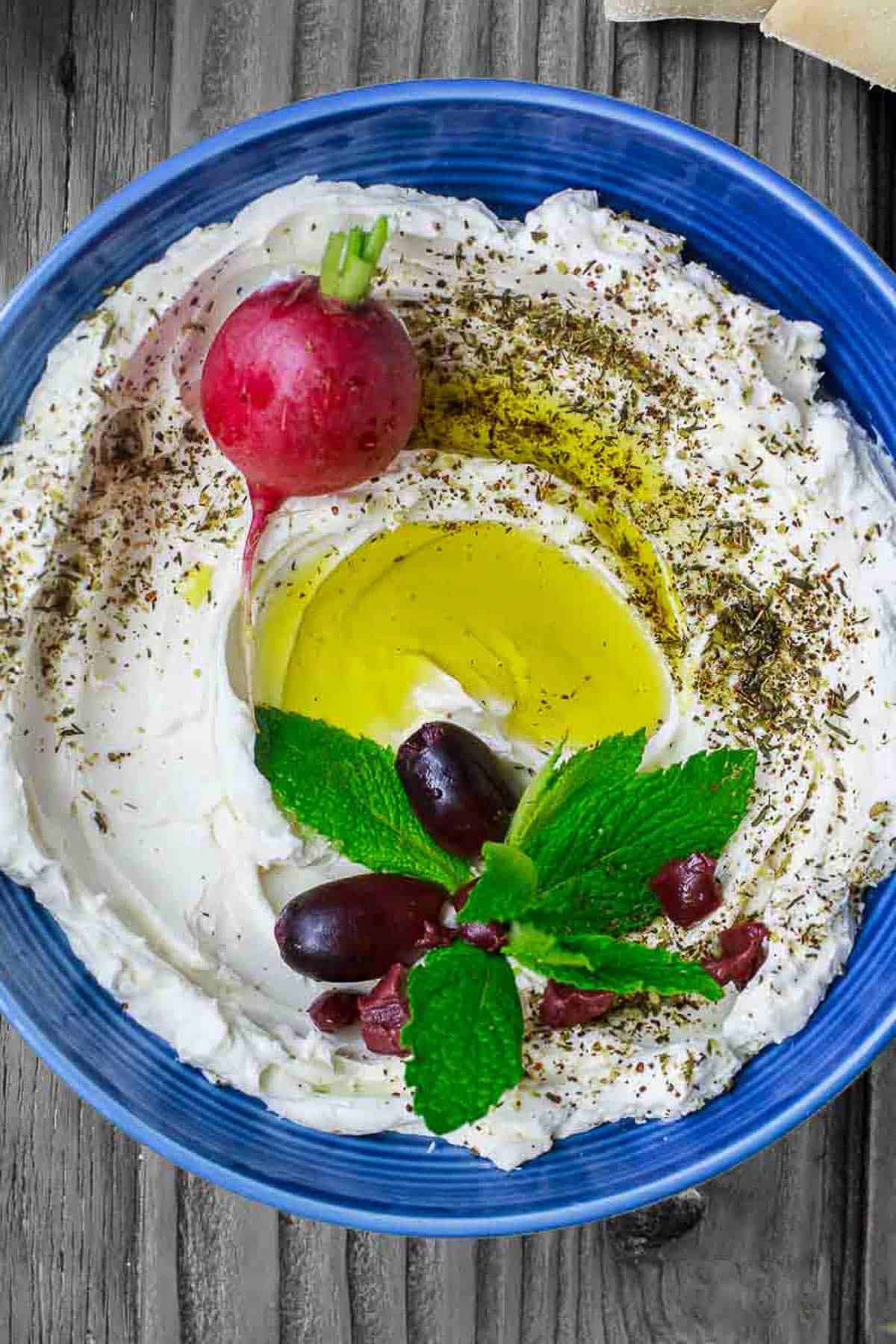
How to Use the Whey
The golden, watery liquid that drains out of the labneh as it drains is called whey. It’s the liquid portion of the milk and it’s rich in protein and micronutrients. On its own, whey has a tangy, almost lemon-like flavor and you can cook with it similar to the way you might use buttermilk. You can discard it, but there are lots of ways to use it in your cooking.
Because of its acidity, it has the same tenderizing effect that yogurt does on meat, so you can use it in place of yogurt to marinate chicken to make Gyro Bowls or in our Best Chicken Marinade. You can also use it to replace the water in bread recipes such as our Easy Homemade Pita Bread, a no-waste kitchen tip to add even more protein and nutrition to your baking!
How to Store Labneh
Store finished labneh (and the whey, if you like) in separate, airtight containers in the refrigerator for about two weeks. Like yogurt, labneh has a relatively long shelf life for a fresh dairy product. Make note of the “use by” date on the yogurt you use to make it as a good general guideline for the resulting labneh, too.
To better preserve your labneh, you can form it into balls that are about 1 tablespoon each in size. Place the balls in a large sterilized, airtight jar and pour extra virgin olive oil to cover. Make sure the balls are completely submerged in the oil at all times.
Cover the jar tightly and leave at room temperature or in the fridge, if you live in a warm area. They should keep for up to 2 months. If you store oil-covered labneh balls in the fridge the oil will solidify. Just set the jar out at room temperature and hour or so before you plan to serve them.
More Dips and Spreads
Dips and Condiments
Homemade Farmer’s Cheese
Appetizer and Mezze
Creamy Whipped Feta Dip
Appetizer and Mezze
Artichoke Dip with Feta
Browse all Mediterranean recipes.
Visit Our Shop.
Labneh
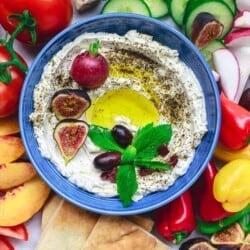
Ingredients
- 4 cups (32 ounces) whole milk yogurt
- 3/4 teaspoon kosher salt
To Serve (optional)
- Extra virgin olive oil
- Za’atar or chopped fresh herbs
- Warm pita bread
- Sliced vegetables
Instructions
- Season the yogurt. Pour the yogurt into a large bowl. Stir in the salt.
- Drain the yogurt. Line another large bowl with a linen or muslin towel (or several layers of cheesecloth.) Pour the yogurt mixture into the towel. Pick up the edges of the towel and tie at the top. Hang from a kitchen sink faucet to drain for 24 to 48 hours. (Alternatively, set a large sieve, lined with linen towel over a deep bowl. Add the yogurt mixture. Cover gently with the overhang of the linen towel, or another linen towel. Set aside on the counter, or in the fridge, to drain for 24-48 hours.)
- Serve. Spread the labneh in a bowl and top with extra virgin olive oil, za’atar spice (or chopped fresh herbs like mint or parsley). Add warm pita and fresh veggies for dipping.
Video
Notes
- Shop this recipe: Visit our shop to browse quality Mediterranean ingredients including the olive oil and za’atar used in this recipe.
- Store labneh in a tight-lid container in the fridge and use as a spread, like any cream cheese.
- Labneh will keep this way up to 2 weeks. Or, for longer storage, preserve it in olive oil. This more labor intensive option works only if the yogurt has been strained for 48 hours forming thicker labneh. At this point, roll the labneh into 3/4-inch balls. Place them on a large tray lined with a paper towel, cover them with another paper towel and refrigerate them overnight. When ready, place the labneh balls in a clean jar and pour high quality olive oil over them, making sure the labneh balls are completely submerged. Cover and refrigerate until needed; it’ll be good for months this way.
Nutrition
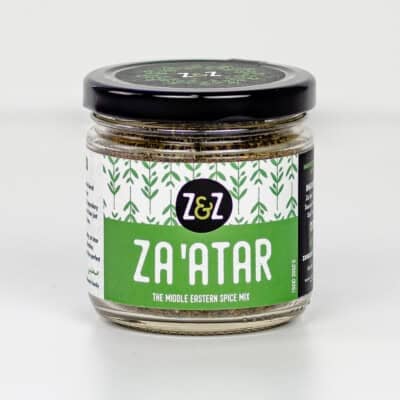
Try Our Favorite Za’atar!
Jazz up your labneh with this aromatic, tart, and savory spice blend.
*This post has recently been updated with new information for readers’ benefit.


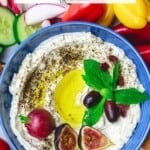
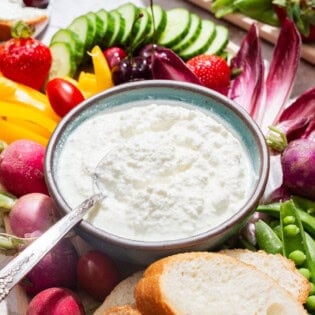

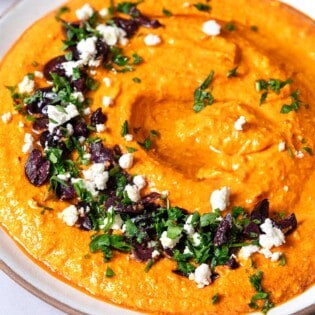
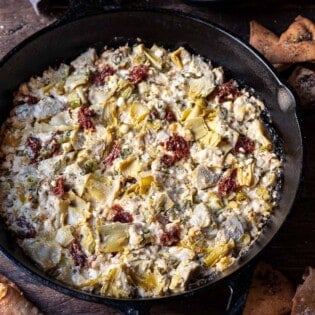
Hi Suzy,
Can it be a cotton tea towel instead of linen?
Sure!
I’ve been making my own labneh for over a year now. I make it from my own homemade goat yogurt. Goat yogurt tends to be less firm than cow yogurt and there is a lot of whey to drain out, so I drain mine for a good 3 to 4 days.
I sometimes add spices to the yogurt when I add the salt. This allows the enzymes in the yogurt to release the flavor of the spices as it drains. I particularly like doing this with cumin or a bit of my own shawarma spice blend.
Since olive oil can act as a preservative, once my labneh is done draining, I mix in a nice drizzle of olive oil, a couple of medium cloves of micro-planed fresh garlic, and sprinkle in some za’atar. The addition of garlic and olive oil makes it possible for the labneh to last at least a week (or more* in the fridge. Also, since labneh has become an everyday staple in our home, it’s ready to go for anyone who just wants a quick blast of labneh with bread, a veggie snack, or a grab-and-go lunch.
Thank you so much for taking the time to share your tips, Rowen!!
Thank you for your flavoring suggestions! At the ripe, young age of 70 I am finally forcing myself to eat yogurt instead of other milk-based products.
Do you let the yogurt strain for 24-48 hours outside the fridge?? I”m confused. Wouldn’t the dairy go bad?
Hi, Sarah. That hasn’t been my experience as long as it’s straining in a cooler spot in the kitchen. You can certainly go ahead and strain the labneh if the refrigerator, though, if you prefer.
I’ve found it depends on the ambient temperature of the room. Since I drain mine for longer I put mine in the fridge. I have a special straining set-up for doing so.
Hi Suzy, I love lebnah. You mention it can be used in place of cream cheese. Would this work in a sweet cream cheese recipe, like frosting for instance?
Hi, Kim. It may, but it’s not something I’ve tried before.
I would try grated lemon zest.Hope this helps.
Any tips how how to make the lebnah more tart?
Try greek yogurt instead.
Can you do this with non dairy yogurt? Just curious as this sounds amazing. I am allergic to cows milk. 🥺
Hi, Debra. I have seen vegan labneh recipes out there, so I know it is possible. I’ve just never tried myself.
Okay… I’ve become a bit obsessed with Labneh :). I first tried it will non fat plain Greek yogurt because that is all I had on hand when I found this recipe and have also made it with the full fat regular yogurt called for here. Both tasted good, but the full fat version was thicker. Either way, I’ve enjoyed this with veggies and crackers, and have topped with all sorts of seasonings. A real treat is everything bagel seasoning + labneh :). You can really have fun with this recipe! Thanks, Suzy!
Any tips on how to make the lebnah more tart?
Longer yogurt thickening/ripening pre-strained should help tartness.
Fabulous! I was given several gallons of milk, turned alot of it into yogurt. This is really delicious and easy! I made up a jar of za’atar and forgot what I was going to use it for. This is perfect! Worked great with 2% milk.
Thanks for sharing, Jane!
Hi can I use a cheese cloth instead of a linen cloth ?
Hi, Susan! Yes… you can do that. Just be sure to use several layers. Another reader has said 3-4 worked well for her.
Hi Suzy
I’ve made this many times now and absolutely love it, use it for lots of things including as a spread on raisin toast (yum).
However, I am finding it increasingly difficult to find good plain yogurt, but the shops here are full Greek yogurt which I also love. Can this be made with Greek yogurt? How would it turn out?
Hi, Glenice! You can give Greek Yogurt a try. It might be a bit thicker, though.
What is a serving size?
Hello! Unfortunately, I don’t have the exact serving size measurement for this one. The labneh you make can be divided by 8 to get the “serving size”. The nutrition info here is our best effort and we use a program that calculates that for us based on the ingredients. The exact serving size measurement is another layer that’s harder for us to precisely calculate at this time.
Hi Suzy,
Looks amazing. Can I halve it.? Only me and husband. Also, I am a bit confused by the directions which say to tie it to the faucet, but then you say in your reply to Rebecca that you strain yours in the fridge. Please clarify.
Love your site and videos.
Thank you,
Susan
Hi, Susan! Sure! I think you could have it for just the two of you. Hanging on the faucet is how it is usually made, however, it can also be refrigerated for this step. Either way is perfectly fine.
Hi I make this in small amounts as is just for me. Just be sure to reduce the salt accordingly. I find it much more convenient to put in fridge in strainer, it works fine and is out of the way too.
Is it acceptable to make Labneh with lactose free yoghurt? thanks!
Hi, Terry! I’ve never personally tried that, so I’m not sure. If you give it a go, will you please stop back and let us know how it turned out?
love your website and recipe ideas, but need to say Za’atar is Hyssop aka origanum syriacum and NOT thyme
btw. made your crispy calamary – a great hit -perfect
I use a jelly straining set up instead of cheese cloth. Works like a charm! Set it up with a bowl underneath to catch the whey.
Thanks for sharing, Judy!